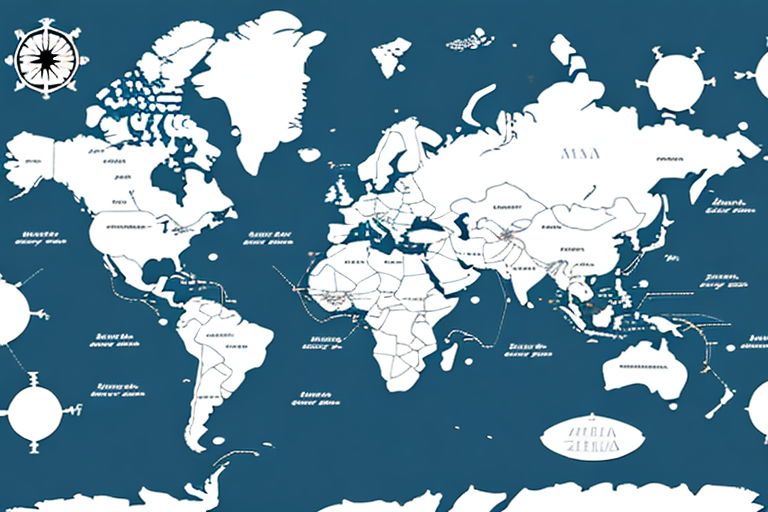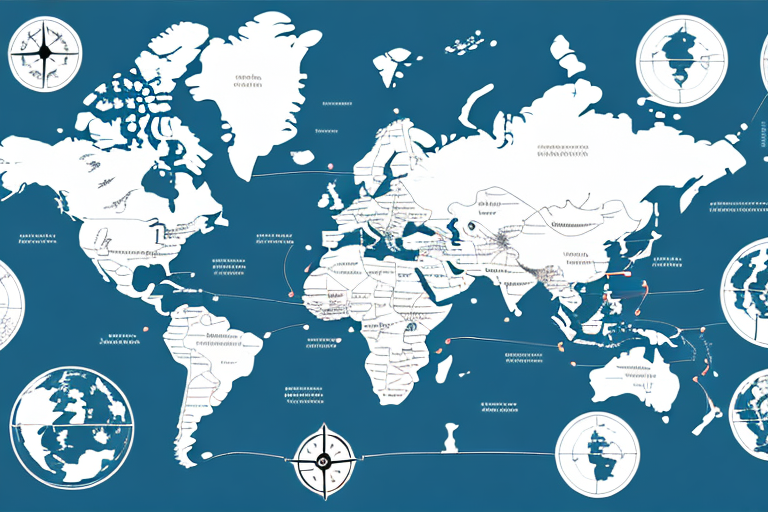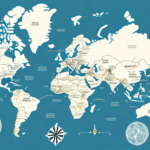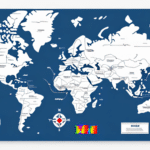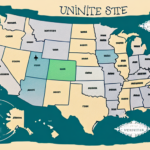Understanding UPS Zone to Zone Shipping Rates
Shipping costs are a critical factor for businesses relying on UPS for their delivery needs. This article delves into UPS zone to zone shipping rates, exploring why they vary, how to determine your shipping zone, and strategies to optimize your shipping expenses.
Why UPS Shipping Rates Vary by Zone
UPS shipping rates are influenced primarily by the distance between the origin and destination, divided into nine shipping zones across the continental United States. Zone 1 signifies the closest areas, while higher zones represent greater distances, leading to increased shipping costs.
Beyond distance, UPS factors in the weight and dimensions of packages when calculating rates. Heavier and larger shipments incur higher costs irrespective of the shipping zone. Additionally, the choice of shipping options—such as ground, air, or international services—further impacts the overall cost. Comparing rates and delivery times across different options helps businesses find the most economical and efficient shipping solutions.
How to Determine Your UPS Shipping Zone
To accurately determine your UPS shipping zone, you need the origin and destination ZIP codes along with the shipping date. Utilize the UPS Zone and Rate maps or the UPS online calculator for precise zone determination and cost estimates.
UPS zones are directly correlated with the distance between ZIP codes, meaning longer distances typically result in higher shipping costs. Additionally, varying shipping options like ground, air, and international services influence both cost and delivery speed.
For frequent shippers, creating a UPS account offers benefits such as saved shipping preferences, package tracking, and discounted rates. Managing shipments online enhances efficiency and convenience.
The Impact of Distance on UPS Shipping Rates
Distance is a significant determinant of UPS shipping rates. Longer distances require more resources, increasing the cost due to elevated fuel and labor expenses.
Package weight is another critical factor. Heavier packages consume more resources, thus raising shipping costs. UPS's diverse shipping options, including ground, air, and international services, come with varying rates based on distance and delivery speed.
Other influencers of UPS shipping rates include package dimensions, delivery location specifics, and shipping volume. Additionally, UPS offers discounts and promotional rates for certain customer segments and shipping volumes, providing opportunities for cost savings.
Factors That Influence UPS Zone to Zone Rates
Several elements beyond distance affect UPS zone to zone shipping rates:
- Package Weight and Size: Larger and heavier packages cost more to ship.
- Shipping Method: Options like ground, air, and international shipments vary in cost.
- Time Sensitivity: Faster delivery options typically come at a higher price.
- Package Type: Fragile or hazardous materials require special handling, increasing costs.
- Destination Location: Remote or limited-access areas may incur additional fees.
Understanding these factors ensures informed decision-making for businesses aiming to optimize their shipping strategies.
How to Save Money on UPS Zone to Zone Shipping
Implementing cost-saving strategies can significantly reduce UPS shipping expenses:
- Consolidate Shipments: Combine multiple shipments into one to take advantage of bulk discounts.
- Choose Slower Shipping Methods: Opting for ground shipping over expedited services can lower costs.
- Negotiate Rates: Engage with UPS representatives to secure better rates based on your shipping volume.
- Use UPS Online Tools: Utilize UPS's rate comparison tools to find the most cost-effective shipping options.
- Proper Packaging: Ensuring packages are well-packaged and accurately labeled can prevent additional fees and delays.
Understanding the Different Types of UPS Shipping Zones
UPS categorizes the continental United States into nine distinct shipping zones. Each zone represents a different distance from the shipping origin, impacting shipping costs and delivery times. Understanding these zones is essential for accurate cost calculation and selecting the most efficient shipping method.
For international shipments, UPS defines zones based on the destination country, considering factors like distance, customs regulations, and transportation infrastructure. Researching the specific zone for your international packages ensures timely and cost-effective delivery.
Tips for Negotiating Better UPS Shipping Rates
Negotiating favorable shipping rates with UPS can lead to substantial savings:
- Understand Your Shipping Needs: Analyze your shipping volume and frequency to identify negotiation leverage points.
- Compare Carrier Rates: Research rates from different carriers to use as a benchmark during negotiations.
- Communicate Clearly: Discuss your shipping patterns and requirements with your UPS account representative to tailor solutions.
- Leverage Shipping Volume: High shipping volumes can qualify for discounted rates or special pricing agreements.
- Consider Consolidation: Grouping shipments or utilizing UPS freight services for larger loads may offer additional savings.
Common Mistakes to Avoid When Using UPS Zone to Zone Shipping
Avoiding common errors can prevent unnecessary shipping costs:
- Incorrect Shipping Method: Choosing the wrong shipping service can lead to higher costs or delayed deliveries.
- Poor Labeling: Inaccurately labeled packages may result in additional fees or lost shipments.
- Inaccurate Weighing: Not precisely weighing packages can cause billing discrepancies and unexpected charges.
- Improper Packaging: Using inadequate packaging can lead to damage, returns, or extra shipping fees.
- Ignoring Discounts: Failing to utilize available discounts or promotions means missing out on potential savings.
Additionally, familiarize yourself with UPS's shipping restrictions to ensure compliance and avoid shipment delays.
Comparing UPS Zone to Zone Rates with Other Carriers
Evaluating UPS's zone to zone shipping rates against other carriers like FedEx and USPS is crucial for cost management. Each carrier has its pricing structure, service levels, and delivery options. By comparing these factors, businesses can determine the most cost-effective and reliable shipping partner for their specific needs.
The Benefits of Using UPS for Your Business's Shipping Needs
Despite rate variations, UPS offers numerous advantages for businesses:
- Diverse Shipping Options: Ground, air, international, and specialized services cater to varied shipping requirements.
- Reliable Tracking and Delivery Confirmation: Enhanced visibility ensures packages are monitored throughout their journey.
- Efficient Package Pick-Up: Scheduled pick-ups streamline the shipping process.
- Exceptional Customer Service: UPS is renowned for its responsive and supportive customer support.
Leveraging these benefits can enhance your business's shipping efficiency and customer satisfaction.
How Technology is Changing the Way We Calculate UPS Shipping Rates
Advancements in technology have revolutionized UPS shipping rate calculations:
- Online Shipping Calculators: Provide instant rate estimates based on package details and shipping preferences.
- Automated Rate Management: Integrates with business systems to dynamically calculate and optimize shipping costs.
- Real-Time Tracking: Offers up-to-date information on package status, aiding in accurate cost assessments.
Utilizing these technological tools ensures accurate, efficient, and cost-effective shipping operations.
Maximizing Savings with Consolidated Shipments and Multi-Zone Strategies
Implementing consolidated shipments and multi-zone strategies can lead to significant savings:
- Consolidated Shipments: Combining multiple orders into a single shipment reduces transportation costs and takes advantage of volume discounts.
- Multi-Zone Shipping: Breaking down long-distance shipments into smaller, zone-specific shipments can lower costs by optimizing routes and utilizing cheaper shipping zones.
These strategies enhance shipping efficiency while minimizing expenses, benefiting both businesses and customers.
Understanding How Package Size and Weight Affect UPS Zone to Zone Rates
The size and weight of packages are pivotal in determining UPS zone to zone shipping rates:
- Weight: Heavier packages incur higher shipping costs due to increased resource consumption during transit.
- Size: Larger packages may require special handling or occupy more space in delivery vehicles, elevating costs.
Optimizing package dimensions and weight through efficient packaging solutions can lead to substantial shipping savings.
Analyzing Real-World Examples of How Different Zones Affect Shipping Costs
Examining real-world scenarios highlights the impact of shipping zones on costs:
- Example 1: Shipping a package from New York City to Los Angeles (approximately 2,451 miles) falls into a higher shipping zone, resulting in higher costs compared to shipping within a closer zone.
- Example 2: Sending a package from New York City to a location within Zone 2 (a few hundred miles away) incurs significantly lower shipping fees due to the shorter distance.
These examples demonstrate how distance and corresponding shipping zones directly influence shipping expenses, emphasizing the importance of strategic shipping planning.
In conclusion, understanding UPS zone to zone shipping rates is essential for businesses that regularly ship packages. By considering factors such as distance, package size and weight, and leveraging available tools and strategies, businesses can effectively reduce shipping costs and enhance their operational efficiency. Implementing the insights and techniques discussed in this article will help ensure that your shipping methods are both cost-effective and capable of meeting your customers' needs.
For more detailed information and resources, visit ShipScience.













